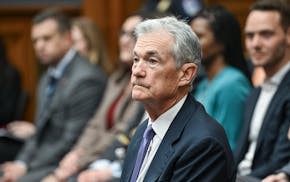Minnesota's largest manufacturers battled a lion's den of challenges last year that shrunk revenue but mostly held onto profits with help from cost-cutting campaigns at nearly half the state's 23 prime producers. Many expressed hope that the soured industrial climate is at last improving for good both domestically and globally. Of Minnesota's top 10 manufacturers, six saw sales decline in 2016. Only Hormel Foods, industrial pump maker Pentair, lawn mower maker Toro and filtration giant Donaldson Co. increased both sales and profits for the year. For others, economic headwinds proved too challenging.
3M, General Mills and Ecolab — the largest manufacturers on the Star Tribune 50 — each battled their respective sales declines with aggressive cost cuts and in some cases prices. They also employed a mix of acquisitions, division sales, staff reductions and price adjustments that ultimately boosted profits despite revenue pressures.
3M, with $30 billion in annual sales, found itself squeezed by the high U.S. dollar and unfavorable currency exchange rates, while General Mills struggled with changing consumer tastes away from processed foods. Hygiene and chemicals firm Ecolab Inc., as well as industrial pump maker Graco, wrestled with the downturn in the oil markets. Mosaic, the Plymouth-based global fertilizer firm that ranked fifth on the list, saw sales and earnings plummet because of a weak farm economy and low crop prices.
A few manufacturers, however, saw rough tides finally calm down in 2016. Bloomington-based Donaldson Co. rallied after several difficult years racked with weak orders from agriculture, mining and oil customers and slowed overseas growth.
CEO Tod Carpenter said he remains cautious. "Recent restocking is an encouraging sign of stabilization, but the mixed outlooks provided by many large customers combined with the re-emergence of headwinds from currency translation keep us cautious," he said.
Earlier this month, results from the national survey of the Institute of Supply Managers similarly found that U.S. producers are walking a tight rope. Factory conditions improved for an eighth month in April but at a slower pace. Growth in new orders and employment slowed to a crawl just as inventories and raw material prices surged. On the plus side, U.S. manufacturers reported production gains.
"Business leaders in the manufacturing sector are more upbeat in their economic outlook so far in 2017, with demand and production expanding modestly once again," said Chad Moutray, chief economist of the National Association of Manufacturers. "As a result, hiring appears to be less cautious this year, especially relative to the loss of 16,000 workers on net seen last year."
Dee DePass • 612-673-7725
Trump trial: Why can't Americans see or hear what is going on inside the courtroom?
Biden visits his Pennsylvania hometown to call for more taxes on the rich and cast Trump as elitist
Business boom: Record numbers of people are starting up new small businesses
Participant, studio behind 'Spotlight,' 'An Inconvenient Truth,' shutters after 20 years

